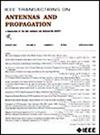人工智能辅助天线优化:集成进化和反级联神经网络与差分进化
IF 4.6
1区 计算机科学
Q1 ENGINEERING, ELECTRICAL & ELECTRONIC
引用次数: 0
摘要
将人工智能技术与天线优化相结合一直是一个极具潜力的研究方向。然而,该领域的大多数贡献都集中在使用监督机器学习构建天线优化的代理模型上。这些替代模型可以快速评估天线设计方案,但不能直接修改设计变量来驱动优化。为了解决这一限制,本文设计了两个神经网络来辅助差分进化(DE)算法优化天线。首先是进化神经网络(ENN),它学习DE对天线设计变量的修改模式,从而提高产生更多最优解的概率。第二种是反向级联网络,首先为每个频率点创建多个反向子网,然后使用级联网络综合这些子网的输出。这种类型的神经网络可以根据特定的需求直接输出高质量的解决方案。最后,通过将这两种网络与DE相结合,实现了人工智能辅助的天线优化方法。实验结果表明,在这两种神经网络的辅助下,DE可以实现更快的天线优化。本文章由计算机程序翻译,如有差异,请以英文原文为准。
AI-Assisted Antenna Optimization: Integrating Evolutionary and Inverse Cascade Neural Networks With Differential Evolution
Combining artificial intelligence (AI) technology with antenna optimization has long been a research direction with significant potential. However, most contributions in this area have focused on constructing surrogate models for antenna optimization using supervised machine learning. These surrogate models can quickly evaluate antenna design solutions but cannot directly modify the design variables to drive optimization. To address this limitation, this article designs two neural networks to assist the differential evolution (DE) algorithm in optimizing antennas. The first is an evolutionary neural network (ENN), which learns the modification patterns of DE on antenna design variables, thereby enhancing the probability of producing more optimal solutions. The second is an inverse cascade network, constructed by first creating multiple inverse subnetworks for each frequency point and then synthesizing the outputs of these subnetworks using a cascade network. This type of neural network can directly output high-quality solutions based on specific requirements. Finally, by integrating these two networks with DE, an AI-assisted antenna optimization method is realized. Experimental results show that with the assistance of these two neural networks, DE can achieve faster optimization of antennas.
求助全文
通过发布文献求助,成功后即可免费获取论文全文。
去求助
来源期刊
CiteScore
10.40
自引率
28.10%
发文量
968
审稿时长
4.7 months
期刊介绍:
IEEE Transactions on Antennas and Propagation includes theoretical and experimental advances in antennas, including design and development, and in the propagation of electromagnetic waves, including scattering, diffraction, and interaction with continuous media; and applications pertaining to antennas and propagation, such as remote sensing, applied optics, and millimeter and submillimeter wave techniques

 求助内容:
求助内容: 应助结果提醒方式:
应助结果提醒方式:


